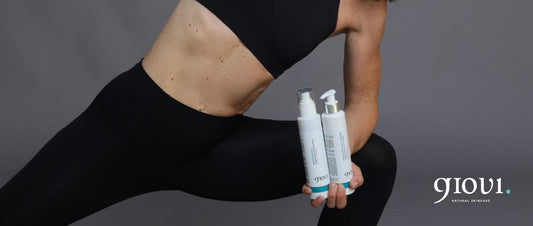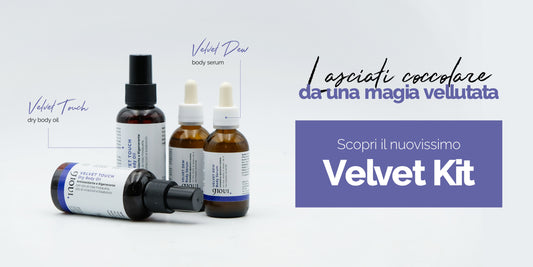When temperatures begin to drop and the days are characterized by wind, snow and cold, it is normal for the skin to begin to show some signs of sagging.
During the colder months, the body physiologically contracts the blood vessels to avoid losing heat, causing less oxygenation of the tissues.
The skin is less vascularized, it slows down the production processes of lipids which however are fundamental for supporting the superficial epidermal layer, because they give the skin that reticular structure that prevents water molecules from dispersing.
Cellular turnover slows down and external agents such as wind, cold, smog, smoke, overly heated internal environments contribute to further weakening the hydrolipidic film of the skin, causing dryness and dehydration.
When the hydrolipidic film thins or is damaged, the skin begins to become red and itchy, then becomes rougher and subsequently begins to flake.
Redness, itching and flaking are therefore the warning signs that must be taken into account immediately
Even if the face is the first to be affected due to its greater exposure to external agents, the skin of the body is still not safe under clothes.
Dry skin mainly affects the legs. Even if they are covered, they are still affected by temperature changes between the external and internal environments. With the first cold weather, the dry skin of the body is wrapped in fabrics and clothes that are too tight, which dry out the skin, which often cracks and cracks.
In winter it is therefore important to pay attention to some precautions to avoid the appearance of dry skin on the legs:
- Be careful with detergents: those that are too aggressive attack the hydrolipidic film which is weaker and more sensitive to heat and cold. Our shower gel with aloe vera, extra virgin olive oil and delicate vegetable surfactants ensures delicate cleansing without altering the pH
- No to too hot baths: do not use boiling water to wash yourself; although it can provide relief when outside temperatures are below zero, its action heats the skin too much and results in dry skin on the body.
- Pat your body dry without rubbing too much on your legs
- Exfoliate your skin at least once a week: a delicate scrub helps the skin to renew itself and prevent the deposit of external pollutants that clog the pores, making the skin dull. Click here to learn about our exfoliants.
- Moisturizes the skin. To protect the skin from the cold and from both external and internal attacks, it is therefore necessary not only to hydrate it, but to restore the right amount of lipids . Shea butter is exceptional for dry skin on the legs, with emollient and soothing properties which guarantees good hydration , restoring the balance of the barrier
In order to maintain the right level of hydration, the skin must retain a minimum quantity of fats capable of supporting that network structure that retains water molecules, allowing it to perform the hydrolipidic barrier function, preventing the formation of folliculitis, which appears more easily in winter due to dry skin.
There is a need for noble lipids, such as vegetable oils, shea butter, cocoa butter to nourish the intercellular cement.
Our body creams contain vegetable oils and butters which are rich in essential fatty acids. They also contain active ingredients which, depending on the type of skin, can solve various needs and be a valid aid in preventing and reducing dryness in the legs and problems such as folliculitis.
Tuscan Extra Virgin Olive Oil from the Buonamici Farm, Cocoa Butter, Shea Butter, Almond Oil, Natural Vitamin E.
REGENERATING BODY CREAM, contiene:
Shea butter, sweet almond oil, natural vitamin E, lemon peel extract, peppermint extract, glycolic acid 7%
POMEGRANATE HYDRATING BODY EMULSION, contiene:
Bioliquefied pomegranate with patented technique, sweet almond oil, shea butter, panthenol, natural vitamin E



